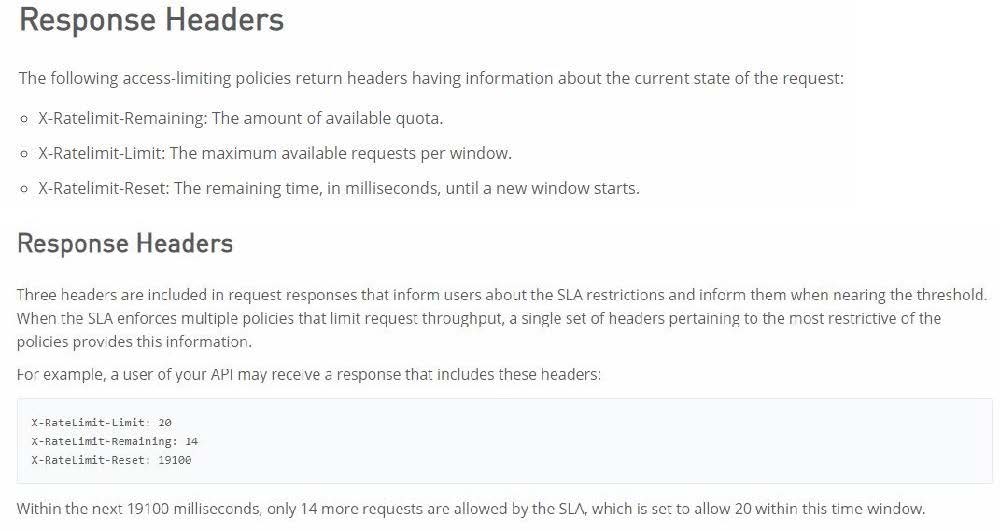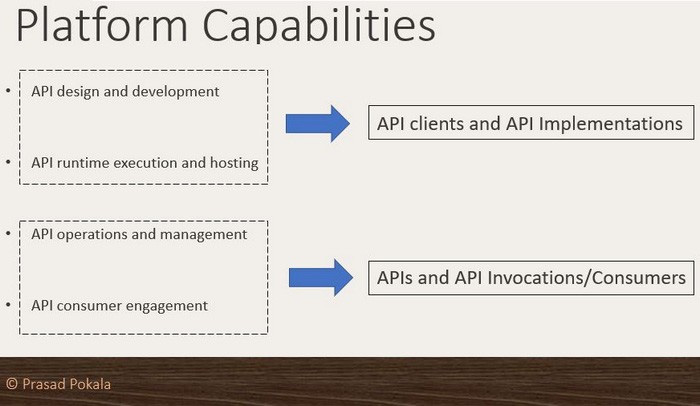MCPA-LEVEL1 Online Practice Questions and Answers
A System API is designed to retrieve data from a backend system that has scalability challenges. What API policy can best safeguard the backend system?
A. IPwhitelist
B. SLA-based rate limiting
C. Auth 2 token enforcement
D. Client ID enforcement
The application network is recomposable: it is built for change because it "bends but does not break"
A. TRUE
B. FALSE
An API has been updated in Anypoint exchange by its API producer from version 3.1.1 to 3.2.0 following accepted semantic versioning practices and the changes have been communicated via the APIs public portal. The API endpoint does NOT change in the new version. How should the developer of an API client respond to this change?
A. The API producer should be requested to run the old version in parallel with the new one
B. The API producer should be contacted to understand the change to existing functionality
C. The API client code only needs to be changed if it needs to take advantage of the new features
D. The API clients need to update the code on their side and need to do full regression
What is most likely NOT a characteristic of an integration test for a REST API implementation?
A. The test needs all source and/or target systems configured and accessible
B. The test runs immediately after the Mule application has been compiled and packaged
C. The test is triggered by an external HTTP request
D. The test prepares a known request payload and validates the response payload
What best describes the Fully Qualified Domain Names (FQDNs), also known as DNS entries, created when a Mule application is deployed to the CloudHub Shared Worker Cloud?
A. A fixed number of FQDNs are created, IRRESPECTIVE of the environment and VPC design
B. The FQDNs are determined by the application name chosen, IRRESPECTIVE of the region
C. The FQDNs are determined by the application name, but can be modified by an administrator after deployment
D. The FQDNs are determined by both the application name and the Anypoint Platform organization
How can the application of a rate limiting API policy be accurately reflected in the RAML definition of an API?
A. By refining the resource definitions by adding a description of the rate limiting policy behavior
B. By refining the request definitions by adding a remaining Requests query parameter with description, type, and example
C. By refining the response definitions by adding the out-of-the-box Anypoint Platform rate- limit-enforcement securityScheme with description, type, and example
D. By refining the response definitions by adding the x-ratelimit-* response headers with description, type, and example
An Order API must be designed that contains significant amounts of integration logic and involves the invocation of the Product API.
The power relationship between Order API and Product API is one of "Customer/Supplier", because the Product API is used heavily throughout the organization and is developed by a dedicated development team located in the office of the CTO. What strategy should be used to deal with the API data model of the Product API within the Order API?
A. Convince the development team of the Product API to adopt the API data model of the Order API such that the integration logic of the Order API can work with one consistent internal data model
B. Work with the API data types of the Product API directly when implementing the integration logic of the Order API such that the Order API uses the same (unchanged) data types as the Product API
C. Implement an anti-corruption layer in the Order API that transforms the Product API data model into internal data types of the Order API
D. Start an organization-wide data modeling initiative that will result in an Enterprise Data Model that will then be used in both the Product API and the Order API
What API policy would be LEAST LIKELY used when designing an Experience API that is intended to work with a consumer mobile phone or tablet application?
A. OAuth 2.0 access token enforcement
B. Client ID enforcement
C. JSON threat protection
D. IPwhitellst
What Anypoint Platform Capabilities listed below fall under APIs and API Invocations/Consumers category? Select TWO.
A. API Operations and Management
B. API Runtime Execution and Hosting
C. API Consumer Engagement
D. API Design and Development
Due to a limitation in the backend system, a system API can only handle up to 500 requests per second. What is the best type of API policy to apply to the system API to avoid overloading the backend system?
A. Rate limiting
B. HTTP caching
C. Rate limiting - SLA based
D. Spike control

